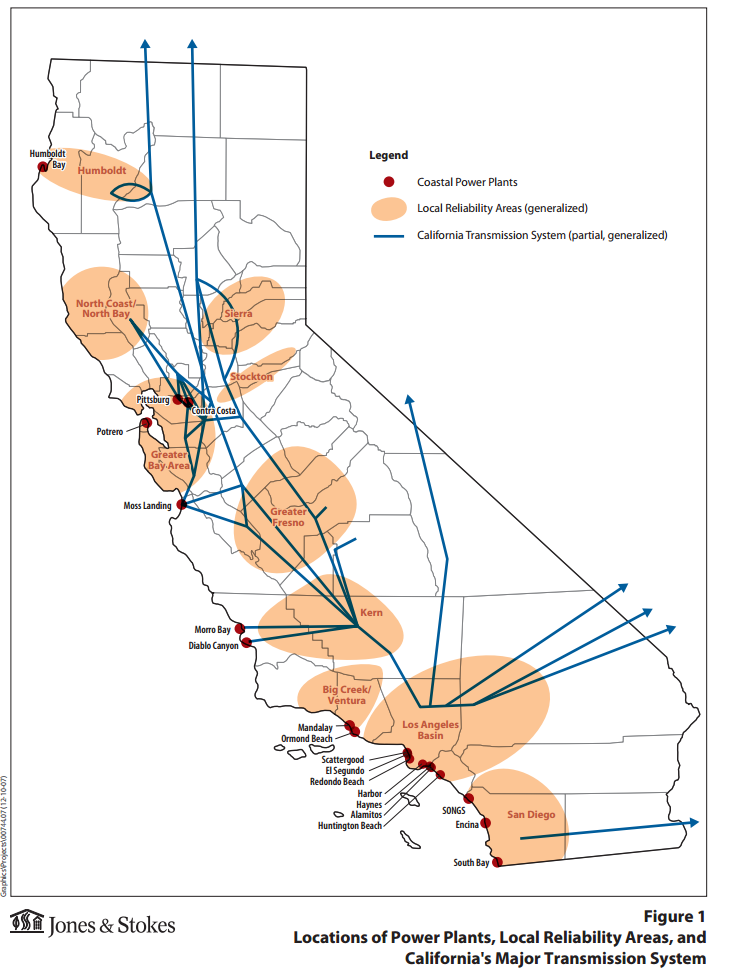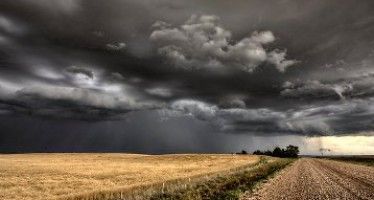California on edge of green-power blackouts?
By Wayne Lusvardi
Check out the nearby satellite photograph of North Korea at night, showing it as a sea of darkness from lack of electrical infrastructure compared to glare of lights from modern, industrialized, capitalist South Korea, Japan and China.
California never could get as bad as North Korea. But its current policies could lead to sporadic blackouts that would produce a map showing our state with the lights out.
At a special meeting of California energy companies and regulators held Feb. 26, Todd Strauss of Pacific Gas & Electric saw the possibility of state power blackouts emerging in 2013 to 2015. The reason is that it has suddenly dawned on state power regulators that green power has resulted in a precarious lack of system flexibility in the state’s power grid.
Said Steve Berberich, the head of the California Independent System Operator, “The problem is we have a system now that needs flexibility, not capacity.”
The blackouts during the the California electricity crisis of 2000-01 were caused by a lack of sufficient energy capacity. But now, what experts at Feb. 26 meeting agreed is that any future state energy crisis likely will come from lack of system flexibility. The diminishing flexibility is a result of the state’s 2011 mandate, signed by Gov. Jerry Brown, that 33 percent of all energy must be from green power sources by 2020.
Oddly, California’s 33 percent renewable energy mandate results in too much capacity from redundant conventional gas-fired power plants needed to backup unpredictable green power. But it also leads to a reduction in system flexibility.
Green power results in low voltage
The wind and sun are highly fluctuating sources of energy. Thus the power grid becomes more precarious because of a lack of voltage needed to push electrons through power lines. Voltage is like water pressure between two points in a pipeline. Either there has to be gravity for water to flow or a pump to lift the water to a higher point.
In a similar fashion, there has to be enough voltage in the power grid for the electrons to flow. The typical voltage required to transmit electricity from power-generating stations is 110 kilovolts to 1,200 kilovolts.
Green power typically is produced in surges, or can result in sudden drops in voltage. The lack of wind stops wind-power generation; and the arrival of nightfall ends solar energy generation.
Just as loss of water pressure in a pipeline results in no water flow, a sudden drop or spike in voltage can lead to a power blackout.
What flexibility means is the need for more power plants with the capability to ramp power up or down quickly to respond to vacillations in green power when the wind doesn’t blow or the sun doesn’t shine. Coal power plants cannot typically respond fast enough to provide backup power. So this means that greater reliance on natural gas-fired power plants.
The future problem for California is that it does not have the right mix of types of power plants and new environmental regulations are forcing either closure or expensive upgrades to its coastal power plants that rely on ocean water for cooling steam generators.
Regulation 316 (b) of the Clean Water Act
Of particular concern at the meeting was compliance with regulation 316 (b) of the U.S. Clean Water Act. It requires power plants no longer to use ocean water for cooling steam turbines. Instead, power plants that have used ocean water for cooling will have to shift to expensive air-cooling towers. This is called “once-through cooling.” The purpose of 316 (b) is to reduce affects on aquatic life such as fish larvae sucked into power-plant water intakes.
Nineteen power plants in California will be subject to shut downs for conversion to air cooling or will have to be decommissioned where the costs to retrofit the plants will be prohibitive.
A map of the power plants is below, followed by a list of the plants. Notice the large number along the Pacific coast.
Alamitos Generating Station
Contra Costa Power Plant
Diablo Canyon Nuclear Power Plant
El Segundo Generating Station
Encina Power Station
Harbor Generating Station
Haynes Generating Station
Humboldt Bay Power Plant
Huntington Beach Generating Station
Mandalay Generating Station
Morro Bay Power Plant
Moss Landing Power Plant
Ormond Beach Generating Station
Pittsburgh Power Plant
Potrero Power Plant
Redondo Beach Generating Station
San Onofre Nuclear Generating Station
Scattergood Generation Station
South Bay Power Plant
Related Articles
Experts missed December CA drenching
Bringing cheer and presents, on Christmas Santa Claus is going to fly over a California a lot greener than was
Big twist in San Diego stadium saga
A stadium task force named by San Diego Mayor Kevin Faulconer has been holding a rapid-fire series of meetings with
Growth controls, not Prop. 13, produced state deficits
Jan. 7, 2013 By Wayne Lusvardi It is not Proposition 13 or greedy bankers, but the many layers of growth






